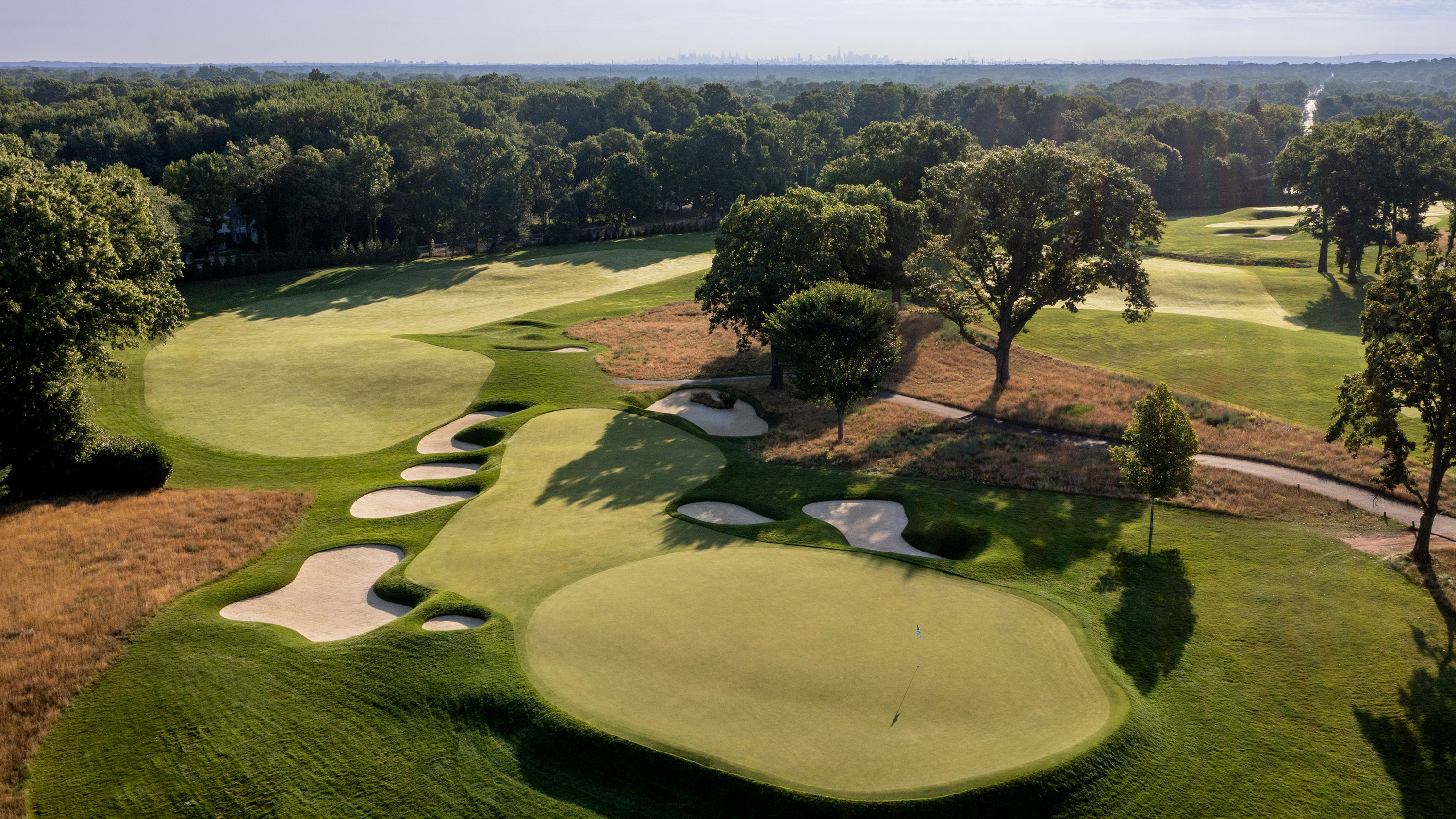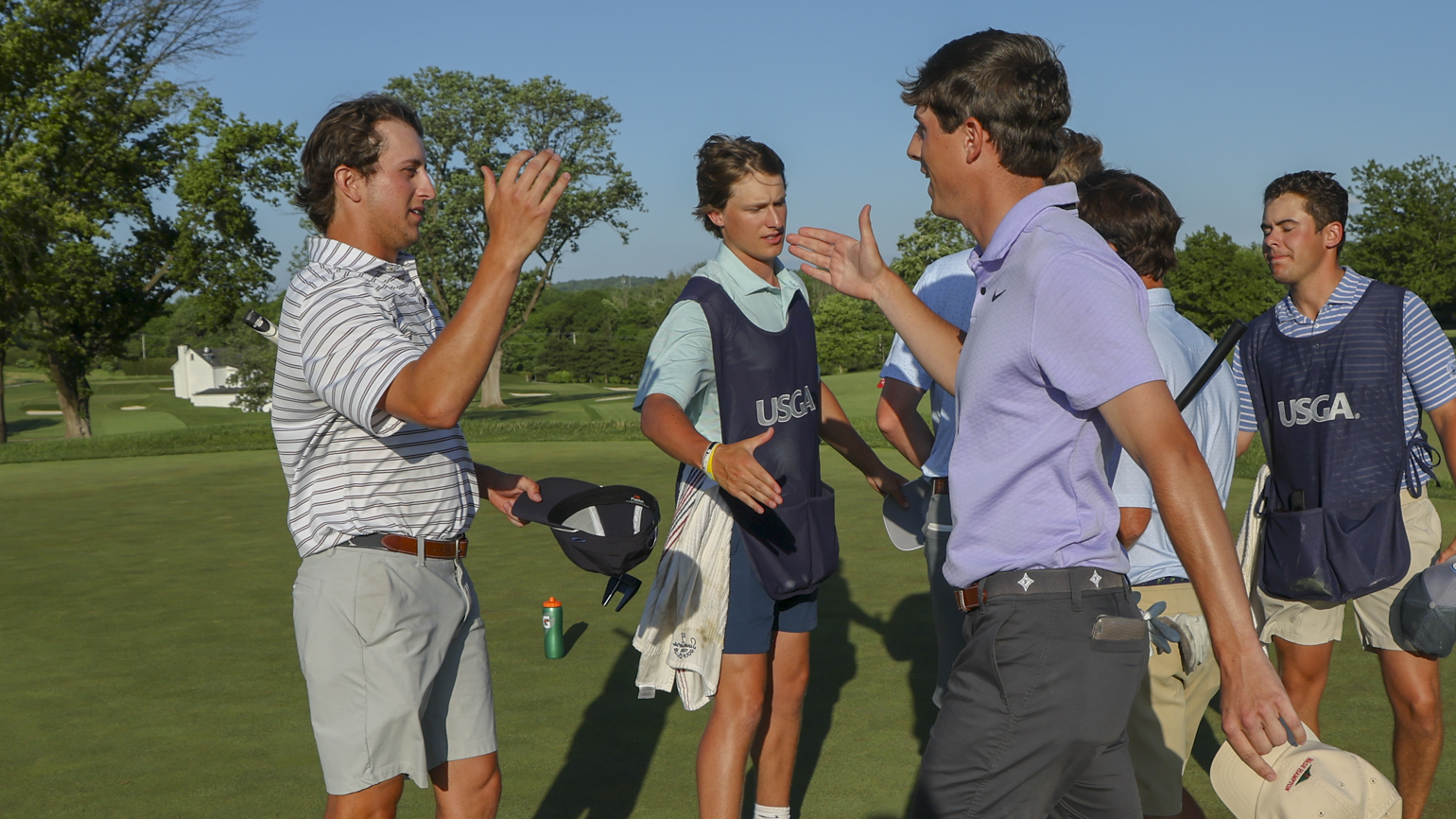Battle Tested: New Jersey's Historic Plainfield C.C. Returns to National Spotlight
This content was first published in Golf Journal, a quarterly print publication exclusively for USGA Members. To be among the first to receive Golf Journal and to learn how you can help make golf more open for all, become a USGA Member today.
Throughout Plainfield Country Club’s rich history, which dates to 1890, countless members and staff have helped make it one of New Jersey’s premier private golf enclaves. But Scott Paris, who began working there in 1997 and is now the club’s COO and director of golf, believes two people stand out.
“In my opinion, the two most important and best decisions Plainfield ever made were first, hiring Donald Ross, and second, hiring Gil Hanse,” he said. Competitors in the 2025 U.S. Amateur Four-Ball championship will quickly understand why Paris bestows such credit upon those two course architects.
More known for his work in New England and at Pinehurst in North Carolina, Ross did make time to design a handful of courses in New Jersey, including Echo Lake Country Club in 1913. While the routing for that layout, which serves as stroke play co-host for the 2025 U.S. Amateur Four-Ball, has been altered over the decades, it still contains nine original Ross holes.
Three years later the Scot returned to the Garden State to begin work at Plainfield, 32 miles southwest of midtown Manhattan. His palette there was an existing Tom Bendolow-designed course, built in 1898 on a site with a series of rolling hills and a distinct place in American history. The club also had purchased an adjoining 60 acres to accommodate its vision.
What’s known as the “Battle of the Short Hills” was fought in June 1777, on and near property that would later become home to the club. The Revolutionary War clash pitted the Continental Army against the British, with the latter winning the battle but the former winning the war six years later. This heritage is reflected in two ways at the club: a replica of a cannon used during that era sits near the practice putting green, and each July 4th weekend a tournament named after the battle is held, with members divided by the location of their locker (upstairs versus downstairs). Team captains playing the 18th hole in period clothing from those Revolutionary War days caps off the spirited event.
Ross, who spent two days on-site creating a layout that opened in 1921 following World War I-related delays, used a ridge in the middle of the property to center his design and enhanced it with intriguing green complexes. Inside the clubhouse, replicas of his original hole drawings fill the walls of the Dornoch Grill, named after the Scottish town where Ross was born.
While known as an understated club focused more on the member experience than high-profile tournaments, Plainfield has hosted events over the years featuring legends such as Walter Hagen, Mickey Wright, and Kathy Whitworth. One member who made a lasting impact on the game was Leighton Calkins, who served as club president from 1908-’14. He developed the initial handicap system adopted by the USGA in 1911. The club’s centennial history book also credits him with coining the term “par” for a standard score, one he derived from a financial phrase “the par value of stocks.” Another member, Kathy Linney, played on the LPGA Tour in the late 1970s despite battling cancer. Among the first female athletes to speak publicly about that fight, Linney received the Ben Hogan Award from the Golf Writers Association of America in 1980, two years before her passing.
Plainfield debuted on the national championship landscape in 1978, when John Cook defeated Scott Hoch to win the U.S. Amateur. Nine years later, an international spotlight came to the club when Laura Davies of England defeated JoAnne Carner of the U.S. and Ayako Okamoto of Japan in the first three-person playoff in U.S. Women’s Open history.
But time and nature, especially trees narrowing the fairways, had encroached upon the Ross design enough that a renovation was needed to restore the layout to his original intentions.
“We were what I call hallway golf,” said Paris.
Enter Gil Hanse, hired in the late 1990s to create a master plan for an entire course renovation, an effort that proceeded in piecemeal fashion until its completion in 2015. The world’s best golfers twice tested their games at Plainfield in the PGA Tour’s Barclays tournament: in 2011, with Dustin Johnson coming out on top, and again in 2015, when Jason Day claimed the title.
The pros encountered a course that had undergone major tree removal, recovering long-lost views across the property. Because green complexes had shrunk significantly, the notable run-off areas famous in the work of Ross had become rather one-dimensional. Restoring those proved critical, as did thorough bunker work.
But it was changes to the fourth hole, especially tree removal along the left side of the fairway, that Hanse points to as the make-or-break point for the restoration. “There were many members who felt that without the trees that hole would be so ‘easy’ and we would ruin the hole and its strategy,” he said. “We pointed out the original design, the Ross plans, and the old aerial photographs showed that there were no trees on the hole. When the trees came down, and we ‘found’ the old bunker shapes in the ground, we knew that we had something special on our hands. The scale of the bunkers, their depth, and the beauty with which they had been set into the ridge was amazing.”
Paris describes scoring at Plainfield as “volatile,” given the mix of tough holes and gettable ones. “You have a ton of options, so you could have two very similarly talented players playing the same hole who choose different options,” he said. “That could mean coming in from different angles, or whether to try and get after a reachable par 5. That’s why I think the Four-Ball is going to be really exciting, both in the stroke and match play portions. It’s just back and forth between gettable holes and challenging holes.”
The greens, which are severe in spots, will play a pivotal role as well. “Those that get it under the hole can run off some birdies, but if you miss in the wrong places you can struggle to make par,” said Paris.
The shortest hole, the par-3 11th, features a green severely sloped from back to front, plus a false front. “Everybody talks about how far you have to carry it there, but what gets overlooked is how you must manage spin,” said Paris. “It’s at a higher point on the property, so wind is also an issue. You really need to have the proper carry distance and a slightly lower spin rate, so that the ball sits where it lands. That will be a key hole.”
Hanse concurs, naming that hole as the one he would love to chat about with its original architect. “The 11th green will inspire a lot of reactions from the players in the championship,” he said. “This is due to the steep slopes in the green, and the do-or-die nature of the tee shot. It is a perfectly natural hole, played from ridge to ridge. But it would be interesting to get Ross’ take on why the features are so extreme, as I imagine that they would have been pushing the envelope even in his day and age.”
While it’s been 38 years since Plainfield last appeared on the USGA championship stage, the wait for the next one will be much shorter. The club is scheduled to host the 2031 U.S. Senior Women’s Open and the 2038 U.S. Senior Open.
“It’s nice for a course to be known, but when you dive deep into the golf industry, the people who know, know,” said Bill McCarthy, U.S. Amateur Four-Ball championship director for the USGA. “There is tremendous respect for a place like Plainfield.”
Tom Mackin is an Arizona-based freelance writer whose work has appeared in Golf Journal and on the USGA website.
















